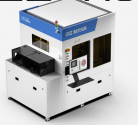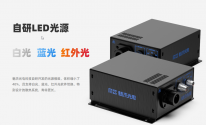Yaxiang Integration announced that the company recently received a bid winning notice from the Information Industry Electronics Eleventh Design Institute Technology Engineering Co., Ltd. (Project No.: GN2023-06- 8412), confirming that Yaxiang Integration has become the contractor of the clean room system package for the second phase of the 12-inch memory wafer manufacturing base project.
The new project is located in the Airport Economic Demonstration Zone in Hefei City, Anhui Province. The bidding unit is the Information Industry Electronics Eleventh Design Institute Technology Engineering Co., Ltd., and the construction unit is Changxin Xinqiao Storage Technology Co., Ltd. The winning bid amount is 728 million yuan.
According to reports, Changxin Xinqiao Storage Technology Co., Ltd. was established on January 5, 2021, and its registered address is No. 2788 Xinhuai Avenue, Economic and Technological Development Zone, Hefei City, Anhui Province. The business scope includes storage technology services; integrated circuit design, manufacturing, processing, technology development, technology transfer, technology consulting, technical services, technical training and technical testing; electronic product sales and provision of after-sales and technical services; semiconductor integrated circuit chip research and development, Design, entrusted processing and sales; design and development of computer software and hardware and network software and hardware products; sales of computer software and hardware and auxiliary equipment, electronic components and communication equipment; equipment and house leasing; industrial mergers and acquisitions; self-operation and agency of various types Import and export business of goods and technology.
Yaxiang Integration stated that the smooth implementation of this project will help improve the company's business undertaking capabilities, provide more experience for the company's subsequent project development and cooperation, and will have a positive impact on the company's operating performance.


